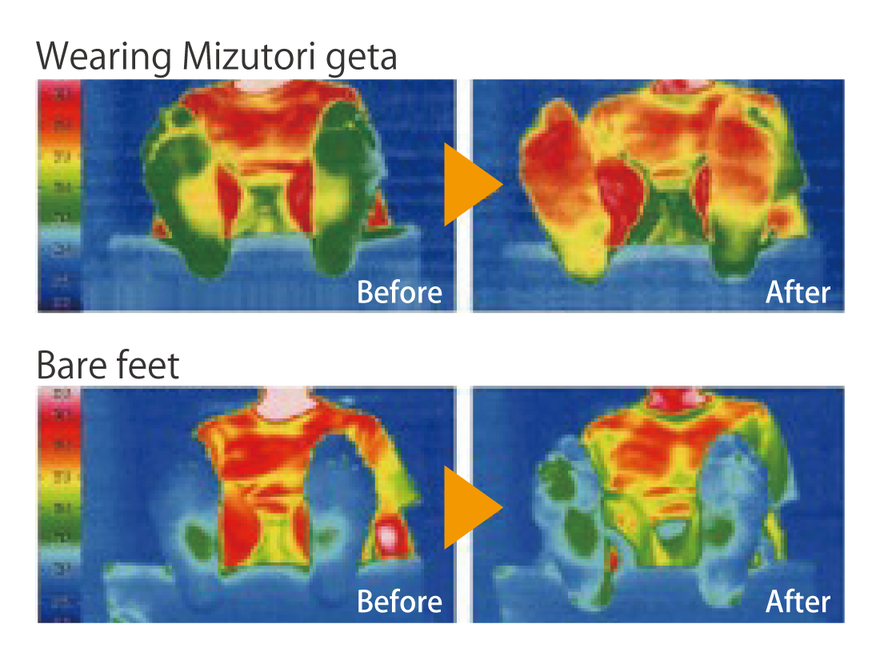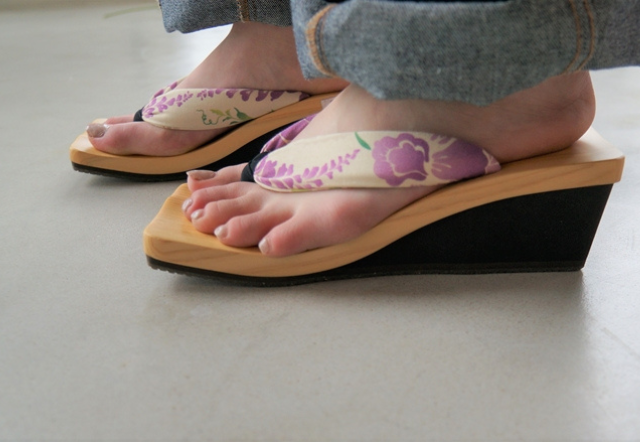There are no products listed under this brand.

MIZUTORI GETA was established in 1937 by Masashi Mizutori, who wanted to create beautiful geta that would fit in a modern lifestyle, while adhering to the traditionally high comfort levels of Japanese footwear.
According to his observations, Geta were not very popular up until the Edo period (1603 –1868), but suddenly gained popularity after the meiji restoration (1868) and after the Second World War. He therefore suggested that geta are strongly related to peace, and wanted to continue making geta for everyone to enjoy and for a long peaceful era to continue.
His daughter Yukiko took over the business in 2019 and continues to create unique geta to enjoy for men and women, for all generations.

Each item by MIZUTORI is handmade by a small team of 15 artisans. The process is labor intensive and requires high craftsmanship and know-how acquired by producing geta for generations of customers and incorporating their experiences and feedback. They have combined their traditional methods with international footwear technologies, as well as Western and Eastern foot care theories in order to create the most balanced, well-designed and comfortable shoes.
The geta are made from high quality wood that is soft to touch and comfortable to walk on. Whereas traditionally geta do not have a left and right side, MIZUTORI GETA do so that they are easier and more comfortable to walk on in daily life. MIZUTORI fans often say their sandals are the most comfortable shoewear they own. With their special five-finger socks, they can be worn year-round.
Founder Masashi MIZUTORI had a theory that if they could design geta that can beautifully suit jeans, they would survive and be worn by young and international footwear enthusiasts.
Mizutori's motto is to "Live comfortably" and "Connecting the world".
They aim to improve people’s health, happiness and comfort through wearing and enjoying Japanese geta.
"Is Geta Really Good for Your Health?"
MIZUTORI carried out a joint study with Shizuoka University to investigate the relationship between their geta and health. The Monogatari unisex model was used for the experiments. The findings showed:


More balanced, closer to ideal posture:
The knee angle and slope of the shoulder was measured before and after a 10-minute walk.
Subjects who do not usually wear geta felt relaxed, and found the Mizutori geta easy to wear and easy to walk in. It is furthermore suggested that Mizutori geta may be useful for muscle training. Electrical discharge of the rectus femoris and calf muscles were measured during a 10-minute treadmill walk:
MIZUTORI geta reduce muscular stress, and allow smoother walking that appears easier.

Improved blood circulation of the sole of the foot:
Walking with MIZUTORI geta sandals improves the blood circulation of the sole. A thirty minutes walk already has a significant impact your feet's blood circulation as shown on the graph.

Unhealthy, 'floating toe' problem reduced,
improved 'centering' of the body:
Before and after a 30 minute walk. Subjects: Students in teens and 20s who do not usually wear geta.

The studies were carried out in 2003 and 2011, at Shizuoka University Faculty of Education, Continuing Education, Department of Sport, by Professor Yoshiaki Yokoyama and Professor Mieko Nakano.











